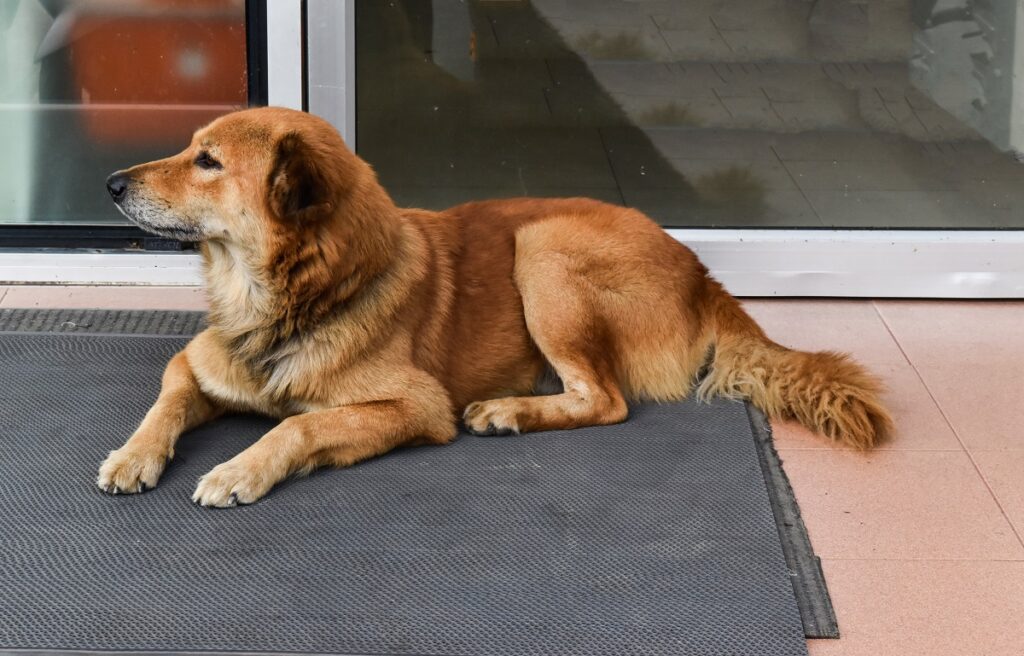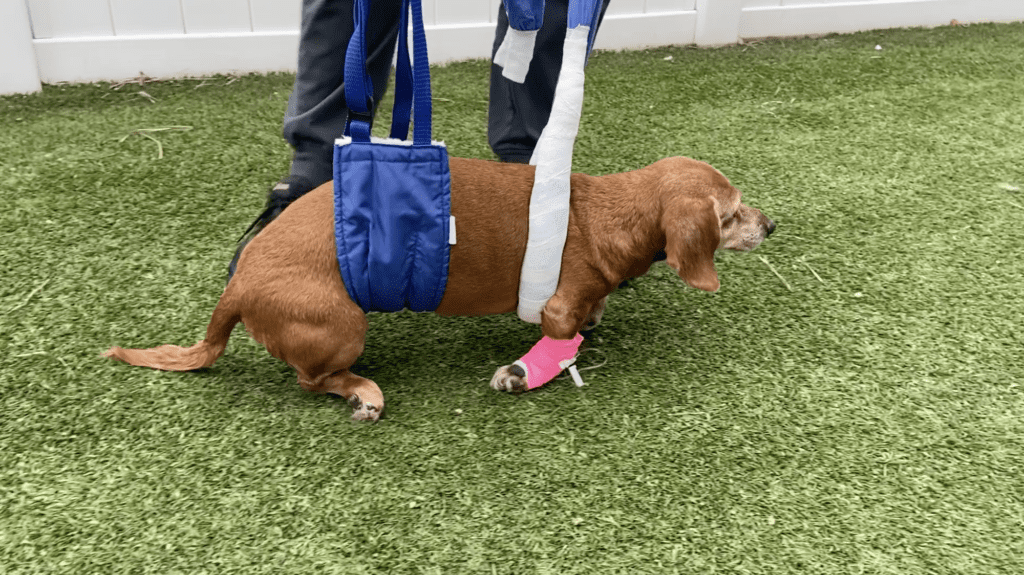Have you ever watched your furry friend, tail wagging excitedly, eagerly approaching the door for their walk, only to suddenly recoil when they hit the smooth, cold surface of your tile floor? The transition from a soft carpet to a hard, unforgiving floor can trigger a sudden change in behavior, and your dog might refuse to budge. This behavior, sometimes referred to as “hard floor phobia,” can be puzzling and frustrating for both you and your canine companion.

Image: dogcoachingacademy.com
While it might look like your pup is being stubborn or picky, there’s often a deeper reason behind their reluctance. Understanding the potential causes and learning how to address them can make all the difference in helping your dog overcome their fear and enjoy a smooth, comfortable walk on any surface.
The Mystery of Hard Floor Aversion
Many reasons could contribute to a dog’s aversion to walking on hard floors. These reasons can range from simple discomfort and sensory sensitivities to underlying medical conditions. Let’s explore some of the most common culprits:
1. Pain and Discomfort
Perhaps the most obvious reason for a dog’s reluctance is physical pain. Hard floors can put pressure on joints, especially for older dogs, dogs with arthritis, or those recovering from injuries. The impact of walking on hard surfaces can exacerbate pain, making the experience uncomfortable and leading to avoidance behavior. If your dog is suddenly exhibiting reluctance on hard floors, especially if they’re showing signs of limping or stiffness, it’s essential to consult your veterinarian to rule out any underlying medical conditions.
2. Sensory Sensitivities
Some dogs have heightened sensitivities to certain textures and sounds. The cold, hard surface of tile or hardwood floors can feel unfamiliar and uncomfortable, even painful, for some dogs. The echo of their footsteps on these surfaces might also be disconcerting, especially for dogs with sensitive hearing. If your dog is showing signs of anxiety or stress when encountering hard floors, it’s crucial to consider their sensory needs and find ways to create a more comfortable experience.

Image: www.speakymagazine.com
3. Trapped Paws
For dogs with long nails or thick fur between their toes, hard floors can pose a challenge. The smooth, slippery surface can make it difficult for their paws to grip, leading to slipping and even getting stuck. This experience can be unnerving and can discourage them from venturing onto those surfaces again. Regular nail trimming and grooming can help prevent this issue.
4. Previous Negative Experiences
One of the most common reasons for hard floor aversion is a past negative experience. If your dog has ever been hurt or scared on a hard floor, they might have developed a learned fear or association. For example, if they slipped and fell or were startled by a loud noise on a hard floor, they might be hesitant to venture onto those surfaces again.
5. Lack of Familiarity
Sometimes, dogs are simply not accustomed to walking on hard floors. If they’ve spent most of their lives on carpet or soft surfaces, the transition to a hard floor might be overwhelming. This lack of familiarity can lead to hesitation, anxiety, and a tendency to avoid the unfamiliar surface.
Helping Your Dog Overcome Hard Floor Aversion
Once you’ve ruled out any underlying medical issues, it’s time to address your dog’s aversion to hard floors. Below are some tips and tricks to help them adapt and feel more comfortable on these surfaces:
1. Gradual Introduction and Positive Reinforcement
Like with any new situation, introduce your dog to hard floors gradually. Start by letting them experience the surface for short periods in a safe, comfortable environment. Encourage them to walk on the floor using positive reinforcement, such as treats, praise, and toys. Begin with the smallest step, even just a few inches of floor. As they get comfortable, slowly and progressively increase the time and distance they spend on the hard floor.
2. Create a Comfortable Environment
Make your home a sensory-friendly space for your dog. Use rugs and mats to soften the surfaces and provide traction. Consider adding comfortable bedding in areas with hard floors, like in their sleeping area. You can also use non-slip flooring treatments to add texture and grip to your existing hard floors.
3. Consider Their Senses
If your dog is sensitive to the sounds of their paws on the floor, use padding or rugs to absorb the noise. You can also try playing calming music or white noise to mask any distracting sounds.
4. Nail Trimming and Grooming
Regular nail trims are crucial for preventing slipping and potential paw injuries. Keep their paws clean and free of mats or debris to help them grip the floor better.
5. Desensitization and Counter Conditioning
If your dog has a learned fear or anxiety related to hard floors, you can use desensitization and counter-conditioning techniques to help them overcome their fear. This involves gradually exposing your dog to the hard floor while associating it with positive experiences. For example, you can start by placing a few treats on the floor, and as they become more comfortable, gradually increase the amount of time they spend on the floor and move further away from their comfort zone.
6. Seek Professional Guidance
If your dog’s aversion to hard floors persists or is severe, seek guidance from a qualified professional. A certified veterinary behaviorist or a dog trainer with experience in fear and anxiety can help you develop a customized training plan that addresses your dog’s unique needs and challenges.
Dog Won’T Walk On Hard Floors
Helping Your Dog Enjoy Their Walks Again
Remember, consistency is key when working with your dog. Regularly reinforce positive experiences on hard floors and remain patient throughout the process. It might take time and effort, but with patience and understanding, you can help your dog overcome their fear and enjoy comfortable, carefree walks on all surfaces.
Beyond addressing the immediate problem, it’s also crucial to foster a strong bond with your dog, create a safe and welcoming environment, and provide them with plenty of opportunities to explore, learn, and grow. If your dog is comfortable and confident, they are more likely to embrace new experiences and challenges, including navigating hard floors with ease.
Remember, your dog’s aversion to hard floors isn’t a personal reflection on you or their intelligence. It’s a behavior that can be understood, addressed, and often overcome with patience, compassion, and a willingness to help your furry friend feel safe and secure in their environment.






